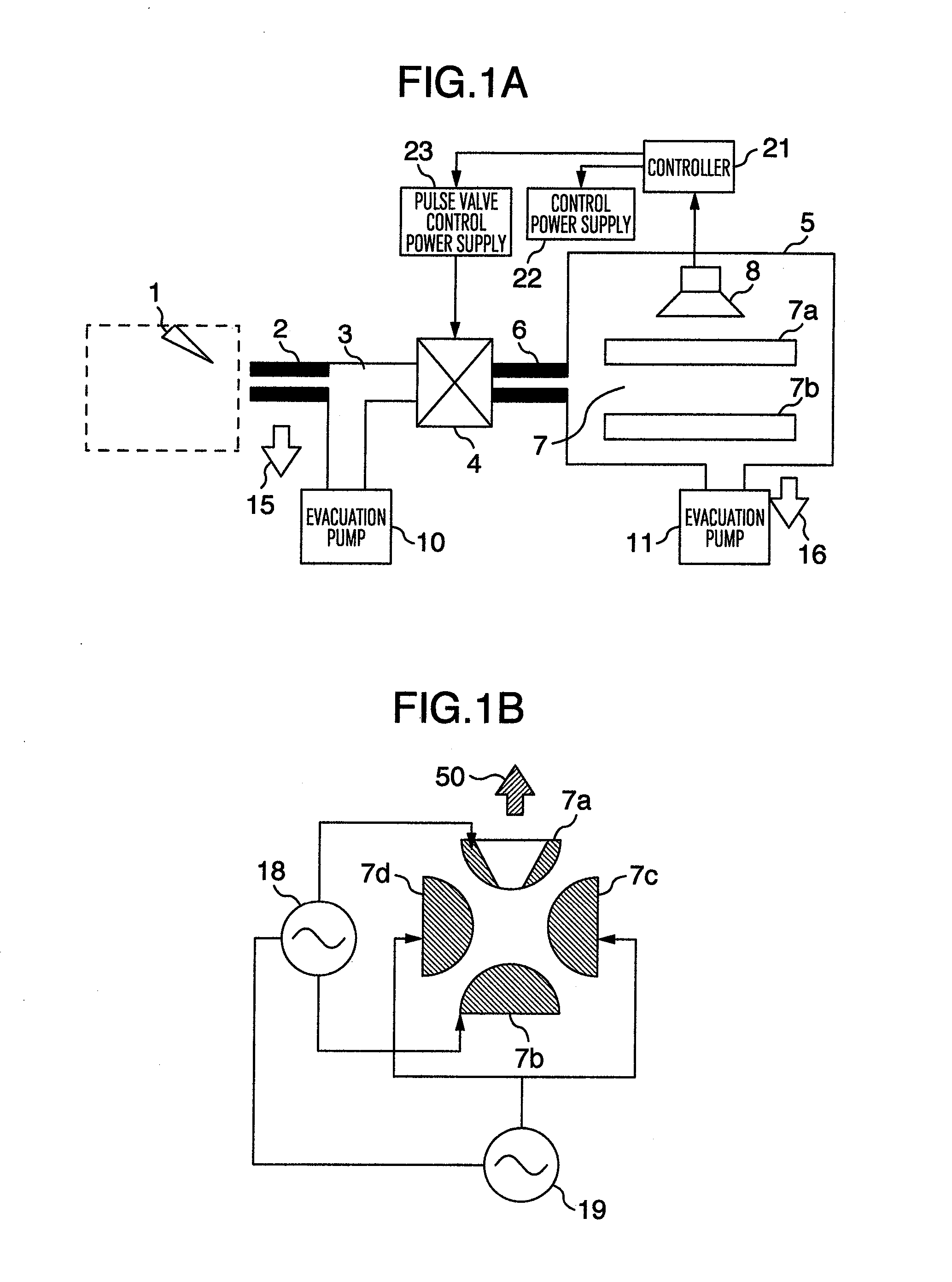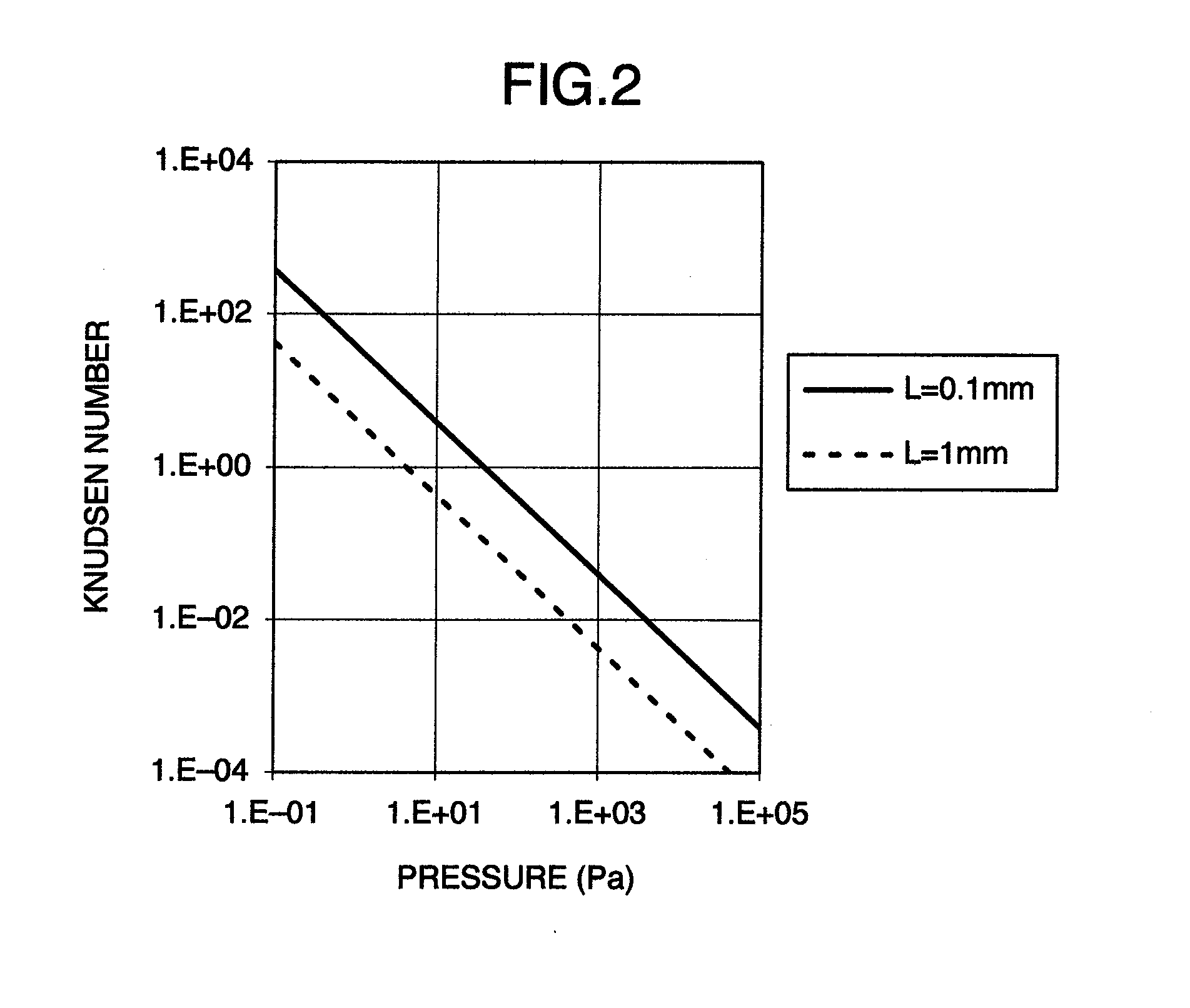Mass spectrometer
a mass spectrometer and mass spectrometer technology, applied in mass spectrometers, particle separator tube details, separation processes, etc., can solve the problems of reducing the transmission efficiency of ions and sensitivity, difficult to heat, and clogging of capillaries, so as to improve resolution, simple configuration, and high efficiency
- Summary
- Abstract
- Description
- Claims
- Application Information
AI Technical Summary
Benefits of technology
Problems solved by technology
Method used
Image
Examples
first embodiment
[0030]FIG. 1A is a configuration diagram of a mass spectrometer according to the present invention. Ions generated in an atmospheric-pressure ion source 1 such as an atmospheric-pressure chemical ion source or an electro-spray ion source pass through a capillary 2 together with gas and are introduced into a pre-valve evacuation region 3. The pre-valve evacuation region 3 is evacuated to approximately 100 to 10,000 Pa by an evacuation pump 10 comprising a diaphragm pump, a rotary pump, or the like. (An evacuation direction of the evacuation pump is indicated as 15.)
[0031]The pressure of the pre-valve evacuation region 3 is set to 100 to 10,000 Pa for the following reason. One of objects of the present invention is to make the pressure ratio between before and behind the valve small and to mitigate the restriction of the leak rate on the valve. For this purpose, it is necessary that the pressure before the valve is sufficiently small compared with the atmospheric pressure of 100,000 P...
third embodiment
[0052]FIGS. 7A and 7B are configuration diagrams of the pulse valve in a third embodiment according to the present invention. A configuration of the analyzer 5 and its subsequent components and a measurement sequence are the same as those in the first embodiment. In the present embodiment, however, a tri-direction slide valve is used as the pulse valve. In a movable space, there is an opening part to a valve-inlet side piping 33, a mass-spectrometry-part side piping 34, and a vacuum-evacuation side piping 35 and passage of a sample is controlled by sliding a movable seal part 32 having holes as illustrated. As shown in FIG. 7A, only the valve-inlet side piping 33 and the mass-spectrometry-part side piping 34 are connected together when the pulse valve 4 is open. As shown in FIG. 7B, only the valve-inlet side piping 33 and the vacuum-evacuation side piping 35 are connected together when the pulse valve 4 is closed. This way of coupling is similar to that in the second embodiment and ...
fourth embodiment
[0053]FIG. 8 is a configuration diagram of the pulse valve in a fourth embodiment according to the present invention. A configuration of the analyzer 5 and its subsequent components and a measurement sequence are the same as those in the first embodiment. In the present embodiment, however, a gate valve 12 is used as the pulse valve. In all of the globe valve and the slide valve in the first, second, and third embodiments, there is the movable seal part 32 in a part contiguous to ion trajectories when the pulse valve is open. If dirt sticks to the movable seal part 32, therefore, there is a possibility that the dirt will cause a memory effect as a noise signal over a long time. On the contrary, in the present embodiment, it is possible to improve the memory effect because the gate valve 12 is disposed in a part far from the ion trajectories when it is open. On the other hand, there is a problem in fast operation with low power consumption because the operation distance is longer tha...
PUM
 Login to View More
Login to View More Abstract
Description
Claims
Application Information
 Login to View More
Login to View More - R&D
- Intellectual Property
- Life Sciences
- Materials
- Tech Scout
- Unparalleled Data Quality
- Higher Quality Content
- 60% Fewer Hallucinations
Browse by: Latest US Patents, China's latest patents, Technical Efficacy Thesaurus, Application Domain, Technology Topic, Popular Technical Reports.
© 2025 PatSnap. All rights reserved.Legal|Privacy policy|Modern Slavery Act Transparency Statement|Sitemap|About US| Contact US: help@patsnap.com



